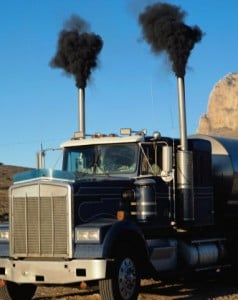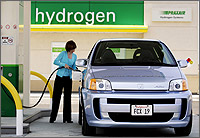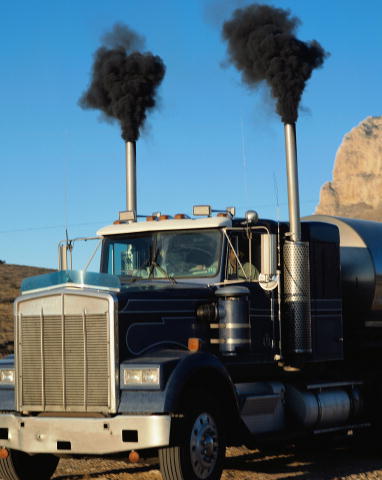A growing population means increased mobility; no ifs, ands or buts about it. It’s a given.
Mobility – or more precisely, locomotion – is nothing more than place-to-place moving. And, mobility, at its most fundamental level, is no more complicated than putting one foot in front of the other.
But there is more to mobility than just this, obviously – so much more, in fact. And, of course there is the detrimental part – the impacts (collision/crash, congestion/gridlock, air-/noise- pollution aspects, just to name three) – connected to such; a side that goes hand in hand with and in which there seems to be no getting away from – at least not at this juncture, anyway.
‘Houston: We have a problem!’
Then there are effects like lower fuel prices coupled with other factors that have manifested themselves into a jump in driving. In fact, an increase of over 52 billion miles in 2016 over the prior-year figures in the United States, up from 3.148 trillion miles traveled in 2015 to more than 3.2 trillion driven miles last year.

The overwhelming majority of the types of vehicles purchased coupled with increased driving is “driving” the “problem.” And the “problem,” well, that’s the harmful pollutant emissions aspect from this sector that are continuing to grow.
The Institute for Transportation and Development Policy and University of California at Davis in the collaboration’s “Three Revolutions in Urban Transportation” report raises the point that there are 764 million motor vehicles in the world today – more than three-fourths of a billion.
Meanwhile, there are ideas galore on how or how best to reduce transport emissions. At the same time, whatever has been implemented to date, has had very limited effect, apparently. And, to reiterate once more, the emissions numbers from transportation keep growing.
Rising emissions from transportation
“Greenhouse gas (GHG) emissions from the transport sector have more than doubled since 1970, and have increased at a faster rate than any other energy end-use sector to reach 7.0 Gt CO2eq in 2010. Around 80% of this increase has come from road vehicles. The final energy consumption for transport reached 28% of total end-use energy in 2010, of which around 40% was used in urban transport,” reported R. Sims, et al. in Climate Change 2014: Mitigation of Climate Change, “Chapter 8: Transport,” Executive Summary, section “8.1: Freight and passenger transport (land, air, sea and water),” p. 605 from the Intergovernmental Panel on Climate Change.1
Significantly reducing emissions from said sector will not be easy. But, the place to put the most effort and emphasis on that makes the most sense is road vehicles through behavioral changes, regulatory action and technological development.
As it relates, some of what was previously brought to bear in: “An air quality pep-talk primer: Transportation – a rallying cry, really,” bears repeating, and that is:
“In some European nations and elsewhere, a hardline stance in addressing transpo. pollution is being taken. Limits, for instance, are being imposed on the number of polluting vehicles that are allowed to enter cities’ proper and the ones that are allowed are likely to be charged a fee if it is not that way already. Such action in Paris immediately comes to mind.
“Getting automobilists to switch to cleaner forms of transportation or adopting the use of cleaner-burning fuels or even embracing notions like non-polluting electric- and fuel-cell-powered vehicles, by doing such, this will have a positive effect on air especially if there is a heightened reliance on such.

These approaches and then some are all very worthy of serious consideration and it would seem the time is more than ripe for implementation action regarding such on a global scale. In other words, such is long overdue.
Notes
- Sims R., R. Schaeffer, F. Creutzig, X. Cruz-Núñez, M. D’Agosto, D. Dimitriu, M.J. Figueroa Meza, L. Fulton, S. Kobayashi, O. Lah, A. McKinnon, P. Newman, M. Ouyang, J.J. Schauer, D. Sperling, and G. Tiwari, 2014: Transport. In: Climate Change 2014: Mitigation of Climate Change. Contribution of Working Group III to the Fifth Assessment Report of the Intergovernmental Panel on Climate Change [Edenhofer, O., R. Pichs-Madruga, Y. Sokona, E. Farahani, S. Kadner, K. Seyboth, A. Adler, I. Baum, S. Brunner, P. Eickemeier, B. Kriemann, J. Savolainen, S. Schlömer, C. von Stechow, T. Zwickel and J.C. Minx (eds.)]. Cambridge University Press, Cambridge, United Kingdom and New York, NY, USA.

Even if powered by hydrogen this gas has to be produced from the use of energy and unless this energy comes from wind, water, geo-therms or sunlight, its still due to making more CO2. The electric car provides no long-term solution unless its power needs no fossil fuel for being generated first.
p.s. your picture of diesel exhaust from a lorry, looks like it was added and faked, after the original photo was made!
The bottom line, is I believe we can do this, that is, provided the will is there.
About the photo, I don’t know whether or not the smoke was superimposed onto the photo. What I do know is that in following a school bus one afternoon in my motor vehicle years ago, both the bus and my car were in the designated left-turn lane at one intersection. It was a relatively warm day as I recall and once the light turned green and vehicle traffic in the lane proceeded to move forward, the interior of my vehicle became filled with the kind of black smoke that you see in the photo above and it was all I could do to not breathe the miasmic crud in. It was bad!
The will to reduce sooty emissions can only be the result of sensible politically encouraged laws which are enforced. Neither the laws not their enforcement is there in many places. A special police group with rights to stop and test every suspicious vehicle should be set up, but most policing budgets don’t have the man-power/budgets to do this so it should become a part of the ministry for the interior instead. And you know what that means–it gets filed and forgotten
What about legal pressure applied through the courts to force action? This seems to me to be the recourse when all other means fail.
Do you expect an offended person such as yourself, to take particulars of the driver of the vehicle, use a lawyer or police to trace the owner, then make a small-claim which will require the judge to order a check on the exhaust of the vehicle and then award damages according to a half hour of breathing difficulties? This subject needs to be tackled more generally, but it costs money to save air becoming dirty.
It may cost money but at the end of the day the evidence is there, man made pollution is making us sick, fossil fuel transportation is inefficient and we are literally poisoning our food supply. Now the US is going back on green energy policy, falling behind from other countries, because you know, coal is the way to go and the future.
Go by bicycle, or use the internet for communications from home.